-
 Bitcoin
Bitcoin $107,247.2038
-0.18% -
 Ethereum
Ethereum $2,424.7947
0.34% -
 Tether USDt
Tether USDt $1.0003
-0.02% -
 XRP
XRP $2.1171
-3.33% -
 BNB
BNB $645.6618
0.06% -
 Solana
Solana $141.5898
-1.32% -
 USDC
USDC $0.9998
0.00% -
 TRON
TRON $0.2710
-0.41% -
 Dogecoin
Dogecoin $0.1602
-2.99% -
 Cardano
Cardano $0.5553
-2.28% -
 Hyperliquid
Hyperliquid $36.3019
-2.42% -
 Bitcoin Cash
Bitcoin Cash $491.7212
2.04% -
 Chainlink
Chainlink $13.0810
-0.23% -
 Sui
Sui $2.6080
-5.06% -
 UNUS SED LEO
UNUS SED LEO $9.0040
-0.05% -
 Stellar
Stellar $0.2350
-3.06% -
 Avalanche
Avalanche $17.2294
-2.31% -
 Toncoin
Toncoin $2.8075
-1.05% -
 Shiba Inu
Shiba Inu $0.0...01121
-3.43% -
 Litecoin
Litecoin $84.2215
-0.32% -
 Hedera
Hedera $0.1429
-4.88% -
 Monero
Monero $312.2199
-0.90% -
 Dai
Dai $0.9997
-0.01% -
 Ethena USDe
Ethena USDe $0.9999
-0.02% -
 Polkadot
Polkadot $3.2973
-2.60% -
 Bitget Token
Bitget Token $4.4742
3.12% -
 Pi
Pi $0.5631
-10.10% -
 Uniswap
Uniswap $6.7817
-2.06% -
 Pepe
Pepe $0.0...09252
-3.74% -
 Aave
Aave $251.3830
-2.24%
Should we run for the huge volume of the high opening the next day of the daily limit?
After a cryptocurrency hits a daily limit up, high trading volume often signals strong retail and institutional interest, but traders should analyze order book depth, news quality, and on-chain metrics before entering a position.
Jun 27, 2025 at 06:07 am
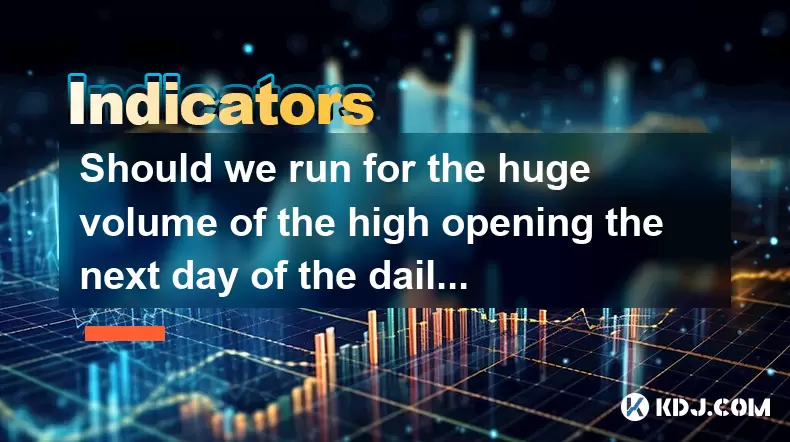
Understanding Daily Limits in Cryptocurrency Trading
In the world of cryptocurrency trading, daily limits refer to price restrictions imposed by exchanges or self-imposed by traders to manage volatility and risk. A daily limit up occurs when the price of a digital asset rises to the maximum allowable percentage within a single trading day. This phenomenon is particularly common with altcoins that experience sudden surges due to news events, partnerships, or speculative interest.
When a cryptocurrency hits its daily limit, it often triggers a halt in trading or restricts further upward movement until the next trading session. Traders may notice that the asset opens at a significantly higher price the following day, accompanied by huge trading volume. This situation raises an important question: should one rush to buy during this high-volume opening?
Daily limit behavior varies across exchanges. Some platforms pause trading entirely once the limit is reached, while others allow trading to continue but cap further gains. Understanding how your exchange handles these scenarios is crucial before making any decisions.
Why High Volume Appears After a Limit-Up Day
The appearance of high trading volume the morning after a daily limit-up event is typically driven by several factors. First, there’s a surge in retail investor interest as more traders become aware of the previous day's performance. Second, institutional players might be adjusting their positions overnight based on updated market analysis.
Another key reason for the high volume is the release of pent-up demand from the previous day. If the asset was halted or restricted during the prior session, buyers who couldn’t enter positions may place orders ahead of the next open, creating immediate pressure on the order book.
High volume doesn't always mean sustainable momentum. It can also indicate profit-taking or short-term speculation, especially if the volume is concentrated on one side of the order book.
How to Analyze the Post-Limit-Open Scenario
Before jumping into a trade just because of high volume post-limit, it’s essential to conduct a thorough technical and fundamental analysis. Start by checking the order book depth immediately after the open. Are the buy walls thick and consistent, or are they thin and easily manipulable?
Next, review the news cycle that led to the limit-up event. Was it a legitimate development like a major partnership or regulatory approval? Or was it speculative hype fueled by social media buzz? The quality of the catalyst matters significantly in predicting whether the momentum will last.
Also, consider examining on-chain metrics, such as wallet flows and large holder movements. Tools like Etherscan, Glassnode, or Santiment can provide insights into whether whales are accumulating or dumping the token.
- Check for unusual spikes in transfer volume
- Analyze changes in exchange inflows and outflows
- Review social sentiment using tools like LunarCrush or CoinGecko Trends
Strategies for Entering After a High-Volume Open
If you decide to participate in the action, entering blindly is not advisable. Instead, use a structured approach to minimize risks. One effective method is to wait for the initial volatility to settle and observe price action patterns such as engulfing candles, dojis, or consolidation zones.
Setting a limit order slightly above the opening price can help avoid chasing the market. Alternatively, some traders prefer to wait for a pullback or retest of support levels before entering. This strategy helps confirm strength and reduces the chances of entering at the top.
Using volume profile indicators can also assist in identifying value areas where most trades occurred. These zones often act as psychological support or resistance points after a significant move.
- Wait for confirmation signals before placing market orders
- Use stop-loss orders to protect capital
- Monitor real-time liquidity changes
Risks Involved in Chasing High-Volume Openings
Despite the excitement surrounding a high-volume open following a daily limit-up, there are considerable risks involved. One of the biggest dangers is falling into a bear trap, where early buyers push the price up aggressively only to sell off once momentum fades. This pattern is especially prevalent in low-cap altcoins with shallow liquidity.
Another risk comes from wash trading or artificial volume manipulation. Some projects or market makers generate fake volume to attract retail investors, only to dump shortly afterward. Always verify volume authenticity through independent analytics tools rather than relying solely on exchange data.
Moreover, emotional trading plays a significant role in poor decision-making. Fear of missing out (FOMO) can lead to impulsive entries without proper risk management.
- Avoid over-leveraging on volatile assets
- Verify exchange-reported volume against third-party sources
- Assess your own risk tolerance before entering
Frequently Asked Questions
What causes a cryptocurrency to hit a daily limit?
A crypto asset hits a daily limit due to rapid price movement triggered by breaking news, whale activity, or algorithmic trading bots reacting to specific conditions. Exchanges implement these limits to prevent extreme volatility and protect traders from excessive losses.
Is it safe to buy a cryptocurrency right after it breaks its daily limit?
Buying immediately after a limit break isn’t inherently safe or unsafe—it depends on context. Evaluate the cause of the move, check supporting fundamentals, and analyze the order book before making a decision.
How can I distinguish between genuine volume and fake volume after a limit-up?
To differentiate real volume from fake, cross-reference exchange data with on-chain analytics tools. Genuine volume usually aligns with increased network activity, wallet transfers, and decentralized exchange volume.
Can daily limits be removed or adjusted by exchanges?
Yes, exchanges have the authority to adjust or remove daily limits based on market conditions, asset maturity, and trading pair liquidity. However, such changes are typically communicated in advance or reflected in the trading rules of the platform.
Disclaimer:info@kdj.com
The information provided is not trading advice. kdj.com does not assume any responsibility for any investments made based on the information provided in this article. Cryptocurrencies are highly volatile and it is highly recommended that you invest with caution after thorough research!
If you believe that the content used on this website infringes your copyright, please contact us immediately (info@kdj.com) and we will delete it promptly.
- Dogecoin to $1? Analysts Weigh In on DOGE's Breakout Potential
- 2025-06-27 10:30:12
- Memecoins, Growth, and Analysts: Decoding the Latest Trends
- 2025-06-27 10:30:12
- Arbitrum (ARB) Price Forecast 2025: Bullish Breakout or Sideways Shuffle?
- 2025-06-27 11:10:15
- Dogecoin, Meme Coins, and the Rise of Neo Pepe: What's Hot in Crypto?
- 2025-06-27 10:50:12
- Arctic Pablo Coin: The Meme Coin Primed for a 2025 Takeover?
- 2025-06-27 11:10:15
- Trump-Backed Stablecoin USD1: Audit Incoming, Aqua 1 Invests $100M in WLFI
- 2025-06-27 11:15:12
Related knowledge

How lethal is the death cross of EXPMA12 and 50 lines?
Jun 27,2025 at 11:15am
Understanding the Death Cross in EXPMA IndicatorsThe death cross is a technical analysis pattern that signals a potential bearish trend reversal. In the context of the EXPMA (Exponential Moving Average), particularly when analyzing the crossover between the EXPMA12 and EXPMA50 lines, traders often interpret this as a strong sell signal. The death cross ...
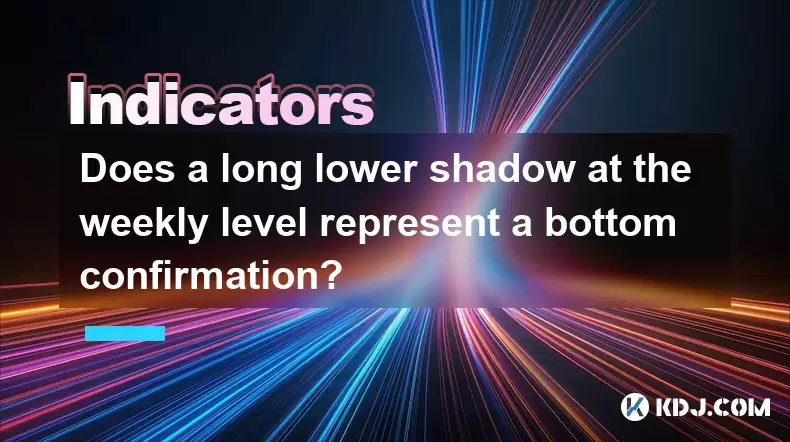
Does a long lower shadow at the weekly level represent a bottom confirmation?
Jun 27,2025 at 10:56am
Understanding the Weekly Lower Shadow in Candlestick AnalysisIn cryptocurrency trading, weekly candlestick patterns are often scrutinized for potential trend reversals. A long lower shadow at the weekly level indicates that during the week, sellers pushed prices down significantly but were met with strong buying pressure that closed the candle near its ...
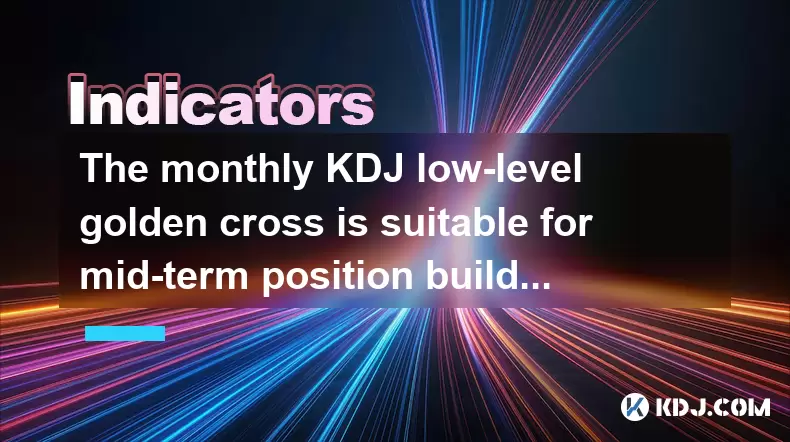
The monthly KDJ low-level golden cross is suitable for mid-term position building?
Jun 27,2025 at 03:14am
Understanding the Monthly KDJ IndicatorThe KDJ indicator, also known as the stochastic oscillator, is a momentum tool widely used in technical analysis within the cryptocurrency market. It consists of three lines: the K line, the D line, and the J line. These lines help traders identify overbought or oversold conditions, potential trend reversals, and e...
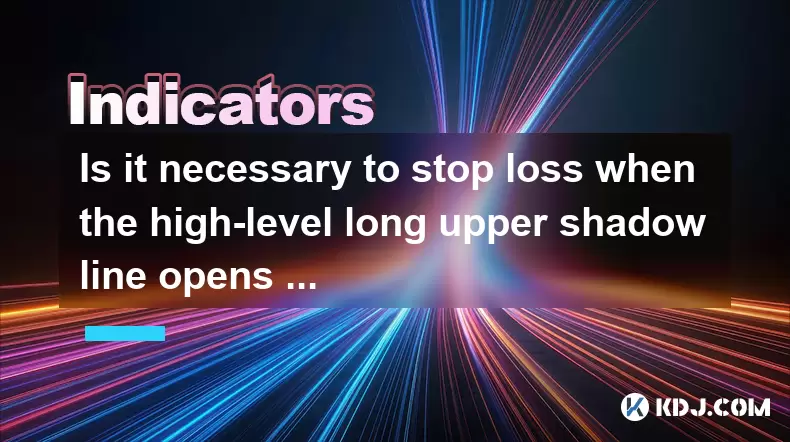
Is it necessary to stop loss when the high-level long upper shadow line opens low the next day?
Jun 27,2025 at 08:22am
Understanding the High-Level Long Upper Shadow LineIn technical analysis, a long upper shadow line refers to a candlestick pattern where the price moves significantly higher during the session but closes much lower, forming a long wick on the top. When this occurs at a high level, it suggests strong resistance and potential reversal. This type of candle...
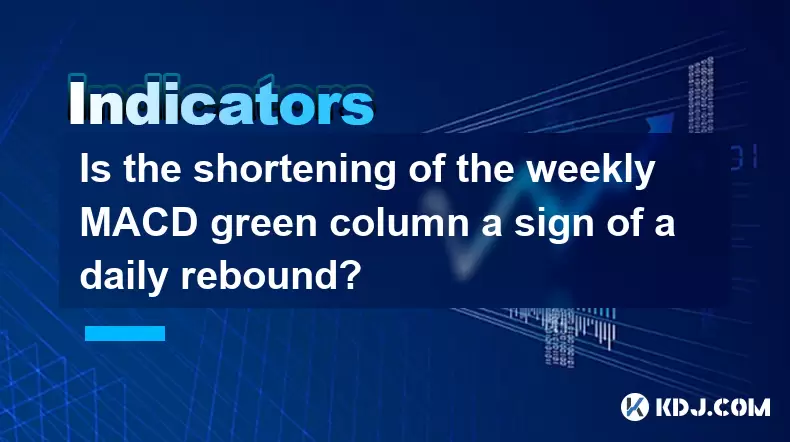
Is the shortening of the weekly MACD green column a sign of a daily rebound?
Jun 27,2025 at 10:22am
Understanding the Weekly MACD Green ColumnThe Moving Average Convergence Divergence (MACD) is a popular technical indicator used by traders to identify potential trend reversals and momentum shifts in financial markets, including cryptocurrencies. The green column in the MACD histogram represents the positive difference between the MACD line and the sig...

How sustainable is the rebound of the lower track of the Bollinger band?
Jun 27,2025 at 10:01am
Understanding the Bollinger Band and Its Lower TrackThe Bollinger Band is a widely used technical analysis tool in cryptocurrency trading, composed of a moving average (usually 20 periods) and two standard deviation lines plotted above and below it. The lower track, or lower Bollinger Band, represents a level that is typically two standard deviations be...

How lethal is the death cross of EXPMA12 and 50 lines?
Jun 27,2025 at 11:15am
Understanding the Death Cross in EXPMA IndicatorsThe death cross is a technical analysis pattern that signals a potential bearish trend reversal. In the context of the EXPMA (Exponential Moving Average), particularly when analyzing the crossover between the EXPMA12 and EXPMA50 lines, traders often interpret this as a strong sell signal. The death cross ...

Does a long lower shadow at the weekly level represent a bottom confirmation?
Jun 27,2025 at 10:56am
Understanding the Weekly Lower Shadow in Candlestick AnalysisIn cryptocurrency trading, weekly candlestick patterns are often scrutinized for potential trend reversals. A long lower shadow at the weekly level indicates that during the week, sellers pushed prices down significantly but were met with strong buying pressure that closed the candle near its ...

The monthly KDJ low-level golden cross is suitable for mid-term position building?
Jun 27,2025 at 03:14am
Understanding the Monthly KDJ IndicatorThe KDJ indicator, also known as the stochastic oscillator, is a momentum tool widely used in technical analysis within the cryptocurrency market. It consists of three lines: the K line, the D line, and the J line. These lines help traders identify overbought or oversold conditions, potential trend reversals, and e...

Is it necessary to stop loss when the high-level long upper shadow line opens low the next day?
Jun 27,2025 at 08:22am
Understanding the High-Level Long Upper Shadow LineIn technical analysis, a long upper shadow line refers to a candlestick pattern where the price moves significantly higher during the session but closes much lower, forming a long wick on the top. When this occurs at a high level, it suggests strong resistance and potential reversal. This type of candle...

Is the shortening of the weekly MACD green column a sign of a daily rebound?
Jun 27,2025 at 10:22am
Understanding the Weekly MACD Green ColumnThe Moving Average Convergence Divergence (MACD) is a popular technical indicator used by traders to identify potential trend reversals and momentum shifts in financial markets, including cryptocurrencies. The green column in the MACD histogram represents the positive difference between the MACD line and the sig...

How sustainable is the rebound of the lower track of the Bollinger band?
Jun 27,2025 at 10:01am
Understanding the Bollinger Band and Its Lower TrackThe Bollinger Band is a widely used technical analysis tool in cryptocurrency trading, composed of a moving average (usually 20 periods) and two standard deviation lines plotted above and below it. The lower track, or lower Bollinger Band, represents a level that is typically two standard deviations be...
See all articles
























































































